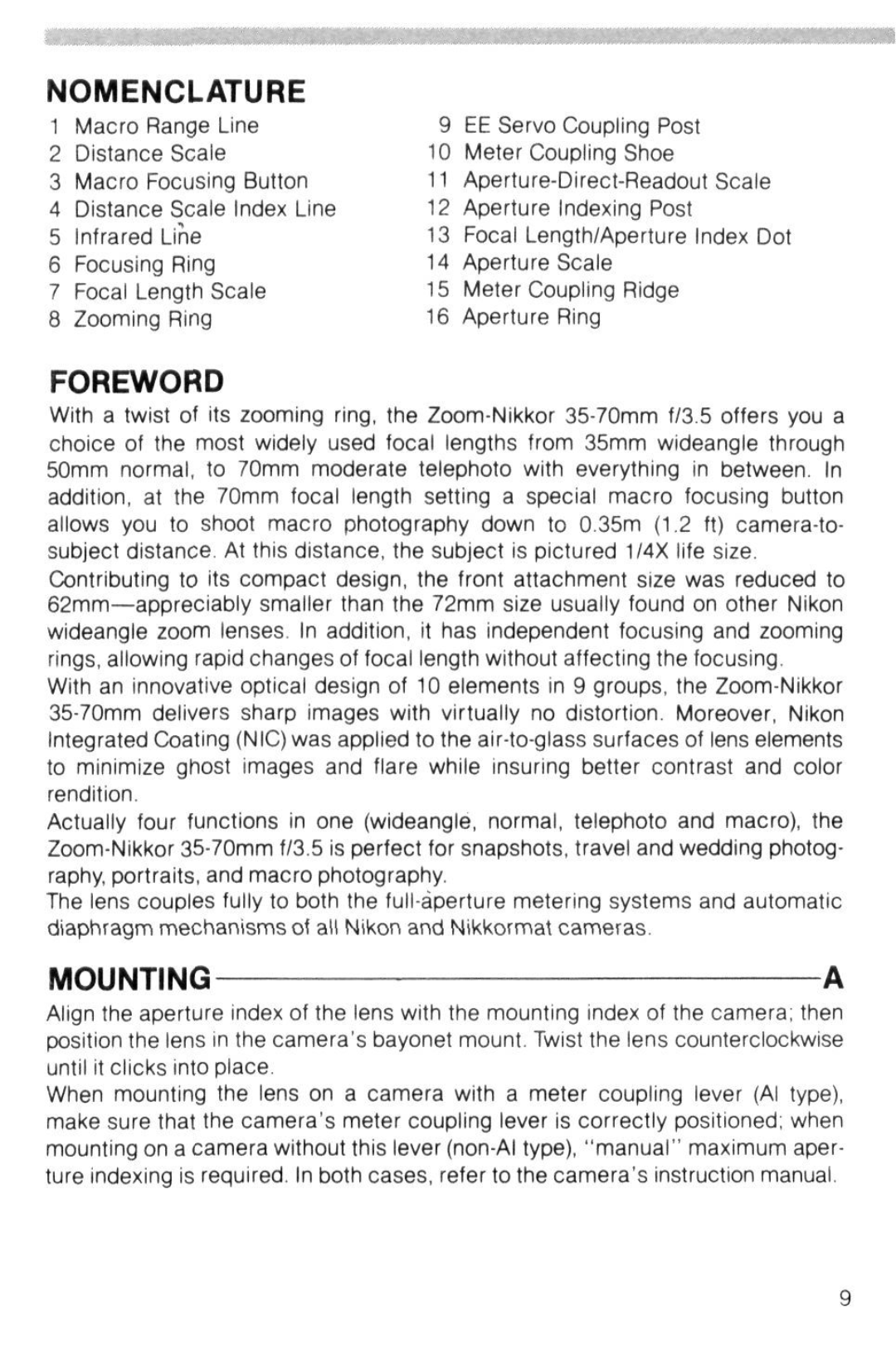Camera Lens specifications
Nikon camera lenses are renowned for their exceptional quality, versatility, and innovative technology, making them a favorite among both amateur and professional photographers. From capturing breathtaking landscapes to shooting intimate portraits, Nikon lenses offer a range of options tailored to various photographic needs.One of the standout features of Nikon lenses is their optical performance. The manufacturers employ Advanced Optical Technology, utilizing high-quality glass elements that minimize aberrations and enhance image clarity. Many lenses incorporate aspherical lenses that help to reduce distortion, producing sharp images even at wide apertures. Additionally, Nikon's Super Integrated Coating (SIC) enhances light transmission and reduces lens flare, ensuring vibrant colors and contrast in every shot.
Another significant characteristic of Nikon lenses is their versatility. The NIKKOR lens lineup includes a diverse array of focal lengths, from ultra-wide-angle lenses ideal for landscape photography to telephoto lenses perfect for wildlife and sports. This variety ensures that photographers can find the perfect lens for any situation, allowing for creative expression without limitations.
Nikon is also at the forefront of technological advancements. Many NIKKOR lenses are equipped with Silent Wave Motor (SWM) technology, which provides fast, quiet autofocus. This feature is particularly advantageous in environments where silence is crucial, such as during wildlife photography or in intimate settings like weddings. The use of weather-sealing in many lenses adds another layer of protection, allowing photographers to work confidently in challenging environmental conditions.
In addition to autofocus technology, many Nikon lenses support advanced features like Vibration Reduction (VR). This technology compensates for camera shake, resulting in sharper images even at slower shutter speeds or when shooting handheld. This feature is invaluable for low-light conditions or when using longer focal lengths.
The build quality of Nikon lenses is another element that distinguishes them. Typically constructed with durable materials, many lenses have a robust design that stands up to the rigors of professional use. Whether shooting in a studio or out in the elements, Nikon lenses are built to perform reliably.
In conclusion, Nikon camera lenses blend superior optical quality, advanced technology, and practical design, catering to the needs of diverse photographers. With features that enhance creativity and shooting flexibility, Nikon lenses continue to be a trusted choice for capturing stunning images. Whether you are an enthusiast or a seasoned professional, there is a Nikon lens suited for your photographic journey.

